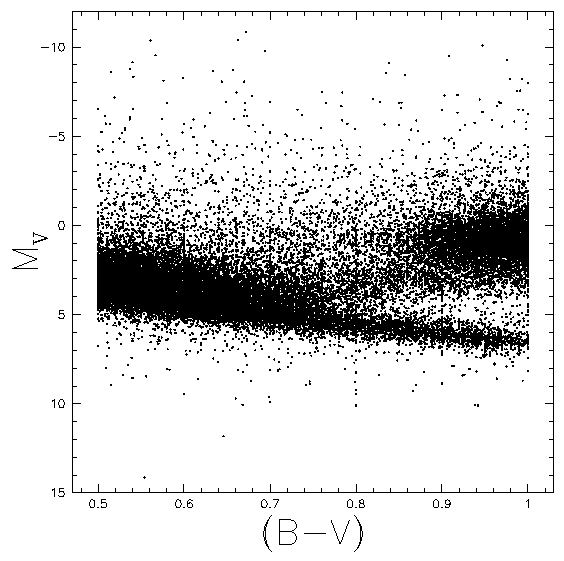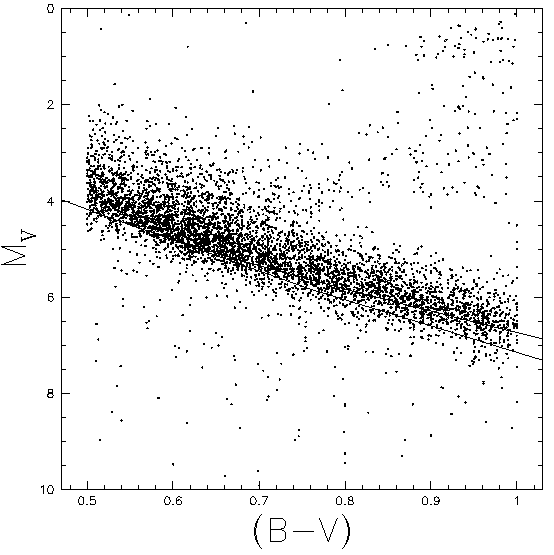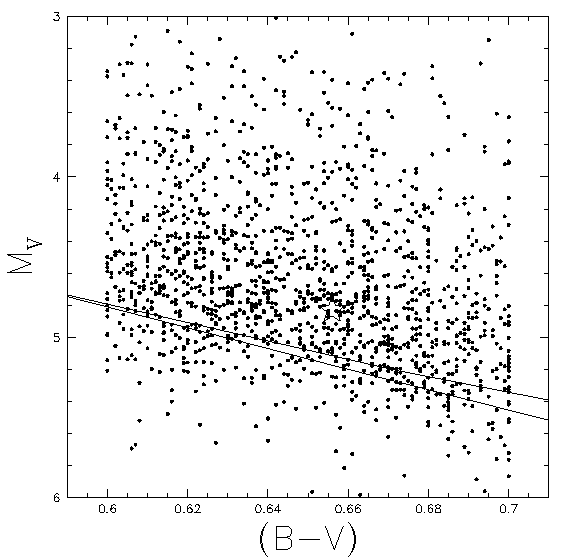Solar-Type Stars: Basic Information on Their Characterization and Classification
David R. Soderblom & Jeremy R. King (Space Telescope Science Institute)
3. Defining Samples of Solar-Type Stars
The Hipparcos Output Catalog makes it easy by providing high-quality
astrometric and photometric data for nearly all stars to V~9.
Figure 5 shows a first cut, namely 0.50 to 1.00 in B-V for any parallax.
Note the vertical bands, especially every 0.1 in B-V, due to round-off
for stars with poor photometry.
We can also define a distance-limited sample, say all the stars within
60 pc (Figure 6). For a typical Hipparcos parallax error of 2 mas, the
distance is good to about 12%, and MV is good to 24%, or 0.24 magnitude.
Note that there are few evolved stars in this distance-limited sample, as
compared to the huge number of evolved stars in the magnitude-limited
sample of Figure 5. Note also that many stars appear to fall far below
the main sequence.


FIGURE 5:(left) All
the stars in the Hipparcos catalog that
fall between 0.50 and 1.00 in B-V.
FIGURE 6:(right)
Stars from the Hipparcos catalog that fall
between 0.50 and 1.00 in B-V and which are closer than 60 pc. The two
lines represent theoretical ZAMS relations transformed to these coordinates
with two different color-temperature relations.
Now let's concentrate on solar analogs. Figure 7 shows an enlarged
portion of Figure 6, with the position of the Sun shown, as well as
theoretical ZAMSs for two different color-temperature relations.
Clearly there is no shortage of candidate solar twins to study.

FIGURE 7:An enlargement of a portion of Figure 6. The large
star represents the position of the Sun in this diagram.}
[First | Prev | Next ]
[Contents]




